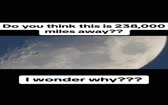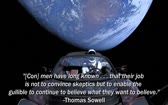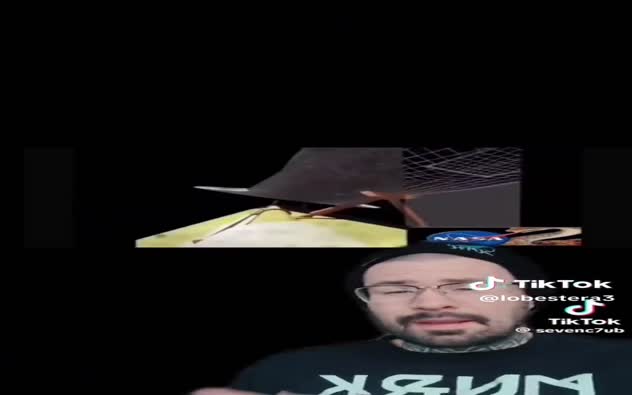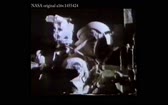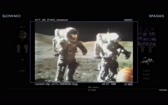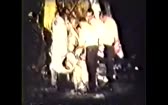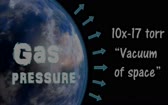Advertisement
Astronauts are Liars - By 7th Day Truth Seeker / Taboo Conspiracy
Can’t see stars, you can see the stars, did not see stars, yes, you can see the stars...
Astronauts are Liars - By Taboo Conspiracy / 7th Day Truth Seeker
This video was slightly modified from a video originally made by 7th Day Truth Seeker. These "astro-nots" are liars and their conflicting testimonies are evident to any reasonable thinking person.
https://www.youtube.com/watch?v=krzOUUryfXU
- Category: Confusion / Unclear / Mistake,AstroNot / Actornauts ,Deceivers / Trickster,NASA / ISS /Mars/ Moon Landing
- Duration: 07:50
- Date: 2021-05-06 17:11:48
- Tags: no-tag
6 Comments
Video Transcript:
Willst from Mark Cameron. This is from Mark Cameron. Willst in space have you ever looked away from earth into the black void? Yeah so yeah you can see the stars. Oh yeah. And pretty much all the time you can see the stars. It's not a lot of light. I mean it's black but there's all kinds of little polka dots. There's all the stars here and the cool thing is about you can see it during the day. Yeah you can and there's more than stars you can see planets. You can see moons. You see the gas, the gas, the Michelin clouds of the way down. Yeah you see the magic cloud. Magilinix. Yeah I was I just heard the Michelin clouds. I didn't want to try. And then you can see the zodiacal light. Whoa. Those are amazing right before the zodiac. The lights of the zodiac. The zodiacal light. But one thing to add to this I think which is kind of interesting about being able to look into the black void is that we can't do that when the sun is out here on earth. It's not because the sun is so bright. It's because this atmosphere right the light comes through the atmosphere and refracts and we see blue. It's got to be a scatter. So what we see is when you looked up at the sky could you actually see the stars and the solar corona in spite of the glare. We were never able to see stars from the lunar surface or on the daylight side of the moon by eye without looking through the optics. I don't recall during the period of time that we were photographing the solar solar solar what stars we could see. I don't remember seeing any. Leo, you... Star Amosong. I do realize that when you were on the moon you had very little time for gazing upwards. But could you tell us something about what the sky actually looks like from the moon, the sun, the stars, if any and so on? The sky is deep black when viewed from the moon as it is when viewed from a sys lunar space, the space between the earth and the moon. The earth is the only visible object other than the sun that can be seen although there have been some reports I've seen planets outside myself did not see planets from the surface but I suspect they might be visible. You don't see stars in the daytime on earth not because they're not there but because the atmosphere is a glow with scattered light from the sun. If you take away the atmosphere the sun will still be there but the sky goes dark. That's what the folks get when they go to the edge of the atmosphere and the calling that the edge of space but when you get to the edge of the atmosphere the atmosphere is no longer between you and the rest of the universe and the stars reveal themselves just as they would at night. Since the moon has no atmosphere than a daytime picture if you're there in the daytime in the moon you see a full night night sky of stars, even with the sun in the sky as well. But when you get to the edge of the atmosphere the stars reveal themselves just as they would at night. If you're there in the daytime in the moon you see a full night night sky of stars, even with the sun in the sky as well. The sky is deep black when viewed from the moon as it is when viewed from syslooner space, the space between year within the moon. As you can see the stars and pretty much all the time you can see the stars. It's not a lot of light. I mean it's black but there's all kinds of little polka dots. There's all that there's all the stars there and the cool thing is about you can see it during the day. Yeah you know actually on my very first mission we went up and when you're in space and you're looking into deep space and you're on the sun side of the orbit the sunlight washes out all the star lights so you can't see any stars just like here on earth. But then when you look out into deep space away from the sun it's the darkest black you can imagine. So you can see the stars. Oh yeah. And pretty much all the time you can see the stars. The cool thing is about you can see it during the day. And when you're when you're in space and you're looking into deep space and you're on the sun side of the orbit the sunlight washes out all the star lights so you can't see any stars just like here on earth. There's all that there's all the stars here and the cool thing is about you can see it during the day. The they're brighter but they're different. A lot of things different about one you don't have the atmosphere distortion so they don't twinkle all right so you see lots of points and you see lots of points and that literally millions of them. And I love in Colorado and you get up in a clear night in Colorado up in the mountains where there's no light and you can see all these stars will multiply that by a thousand. That's what it's like in space and then when you're outside doing a spacebar and you you have that one or two opportunities where you can let your eyes adjust you can start to notice that some of the stars have colors we don't see here on the ground. And we can out these stars. The sky of course was was black but it had sort of a velvet sheen to it. The biggest visual surprise was just how black the sky was. You have a brilliant sun, brighter than any sun you normally would see even here in New Mexico. You have these extraordinary high mountains. We were in a valley deeper than the Grand Canyon but then you have this black sky, a sky blacker than black as the old Vidicon expression used to be. Just the inherent beauty of it, the velvet, bottomless bucket of the universe, in like just hanging there in a vast sea of darkness and the most frightening darkness that you could ever imagine. I've often tried to explain a difference between darkness when you turn out to lights and it's dark in here or blackness. Blackness is the endlessness of it all. It's hard to comprehend. When you get up in a clear night in Colorado up in the mountains where there's no light and you can see all these stars will multiply that by a thousand feet. That's what it's like in space. And we cannot see stars. I'm just a systems engineer on a well-functioned spacecraft coming home and so sure I had worked to do but not nearly as pressing as before. And we were oriented such that we were rotating to keep thermal balance on the spacecraft and oriented in such a way that every two minutes of the earth, the moon, the sun, and a 360 degree panorama of the heavens appeared in the cabin window. And that was awesome. It was an overwhelming experience and we have to realize that in space without the intervening atmosphere, the heavens are 10 times as bright, stars 10 times as numerous because there's no administrative block block the light. And we have to realize that in space without the intervening atmosphere, the heavens are 10 times as bright, stars 10 times as numerous because there's no administrative block block the light. Yeah. So yeah, because you can see the stars. Oh yeah. Yeah. And pretty much all the time you can see the stars. Yeah. It's not a black light. I mean, it's black but there's all kinds of little polka dots. There's all the stars here. And the cool thing is about you can see it during the day. Do you remember seeing it? Leo, the sky is deep black when viewed from the moon as it is when viewed from cis lunar space, the space between the earth and the moon. And when you're when you're in space and you're looking into deep space and you're on the sun side of the orbit, the sunlight washes out all the star light so you can't see any stars just like here on earth. But then when you look out into deep space away from the sun, it's the darkest black you can imagine. So you can see the stars. Oh yeah. And pretty much all the time you can see the stars.










 Donate
Donate